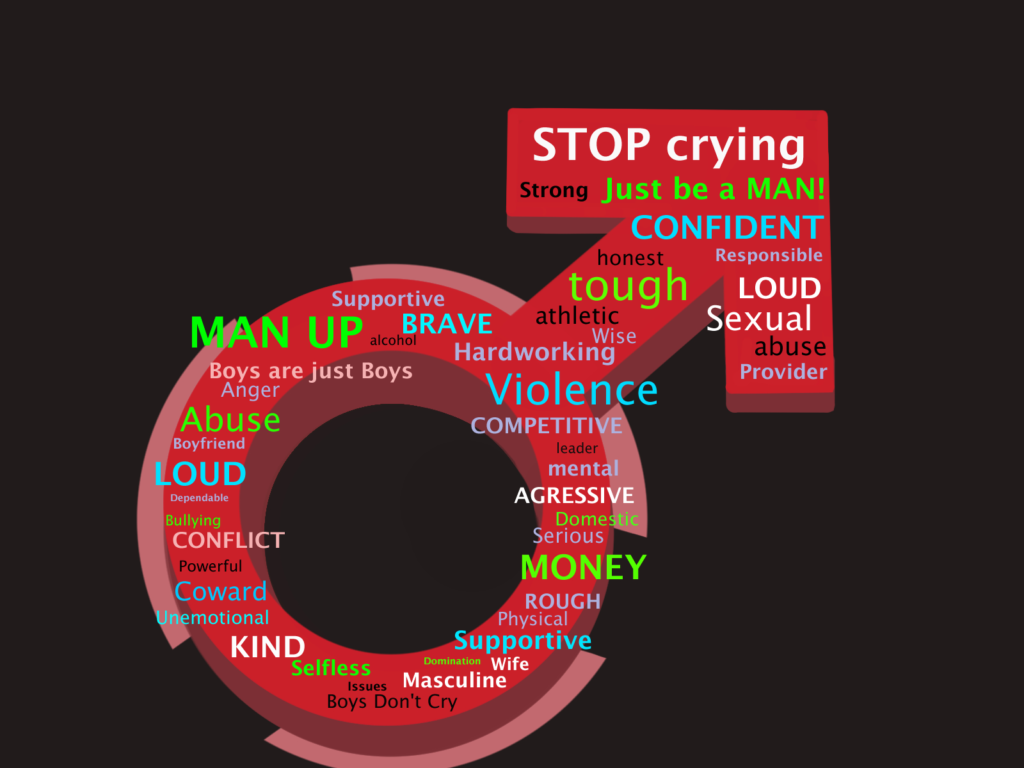
Toxic masculinity has become a buzzword in recent years, often sparking heated debates and discussions. But what exactly does it mean? This article will explore the definition of it, its characteristics, effects on individuals and society, and how we can address it.
What is Toxic Masculinity?
Toxic masculinity refers to cultural norms and behaviors traditionally associated with masculinity that can be harmful to men and society. It emphasizes traits like aggression, emotional repression, and dominance. While masculinity itself isn’t inherently negative, it distorts these traits into harmful behaviors.
The Roots of Toxic Masculinity
The term “toxic masculinity” originated in the late 20th century during the mythopoetic men’s movement. This movement sought to redefine masculinity, highlighting the need for men to connect emotionally and spiritually. However, it also perpetuated some harmful ideas, suggesting that traditional masculinity was under threat from feminism and societal changes.
Key Characteristics of Toxic Masculinity
Toxic masculinity manifests in various ways, including:
- Aggression: Men often feel pressured to display physical strength and aggression. This can lead to violence and bullying.
- Emotional Repression: Society teaches men to suppress their emotions. This can result in mental health issues like depression and anxiety.
- Dominance: Toxic masculinity promotes the idea that men should dominate others, often leading to unhealthy relationships.
- Homophobia: Many men feel compelled to reject anything perceived as feminine, leading to discrimination against LGBTQ+ individuals.
- Promiscuity: it often glorifies men who have multiple sexual partners while shaming women for the same behavior.
How Toxic Masculinity Affects Men
Men who conform to toxic masculine norms often face significant psychological challenges. They may struggle with expressing emotions, leading to feelings of isolation. Furthermore, the pressure to be dominant can result in unhealthy competition and aggression, harming their relationships.
The Impact on Women and Society
Toxic masculinity doesn’t just affect men; it has far-reaching consequences for women and society as a whole. The glorification of aggression and dominance can lead to violence against women and perpetuate gender inequality. Women often bear the brunt of toxic masculine behaviors, facing harassment and discrimination in various settings.
Challenging Toxic Masculinity
Recognizing and addressing it is crucial for fostering healthier relationships and communities. Here are some ways to challenge these harmful norms:
1. Promote Emotional Expression
Encouraging men to express their emotions can help combat the stigma surrounding vulnerability. Creating safe spaces for men to share their feelings can foster deeper connections and reduce isolation.
2. Redefine Masculinity
It’s essential to redefine what it means to be masculine. Emphasizing traits like empathy, cooperation, and emotional intelligence can provide a more balanced view of masculinity.
3. Educate on Healthy Relationships
Teaching young boys about healthy relationships and consent can help combat the entitlement often associated with it. This education should start early and continue through adolescence.
4. Challenge Aggressive Behaviors
Addressing aggressive behaviors when they occur is vital. Whether in schools, workplaces, or social settings, calling out toxic behaviors can help create a culture of accountability.
5. Support Mental Health Initiatives
Encouraging men to seek help for mental health issues is crucial. Providing resources and support can help break the stigma surrounding mental health.
The Role of Media and Culture
Media plays a significant role in perpetuating toxic masculinity. Movies, television shows, and advertisements often glorify aggressive male characters while depicting emotional vulnerability as weakness. Challenging these portrayals in popular culture can help shift societal norms.
The Importance of Intersectionality
Understanding toxic masculinity requires an intersectional approach. Different cultures and communities experience masculinity in unique ways. Recognizing these differences can help create more effective strategies for addressing toxic behaviors.
The Future of Masculinity
As society evolves, the concept of masculinity is also changing. More men are embracing emotional intelligence, vulnerability, and empathy. This shift is essential for creating healthier relationships and a more equitable society.
Conclusion
Toxic masculinity is a complex issue that affects men, women, and society as a whole. By recognizing its characteristics and addressing its impact, we can work towards a healthier understanding of masculinity. Promoting emotional expression, redefining masculinity, and challenging harmful behaviors are crucial steps in this journey.
As we move forward, let’s strive for a world where all individuals can express themselves freely, regardless of gender norms. Together, we can create a society that values empathy, respect, and equality.
FAQs
- What is toxic masculinity?
Toxic masculinity refers to cultural norms that promote harmful behaviors associated with traditional masculinity, such as aggression and emotional repression. - How does it affect men?
Men who conform to toxic masculine norms often struggle with emotional expression, leading to isolation and mental health issues. - What impact does it have on women?
It perpetuates gender inequality and can lead to violence and harassment against women. - How can we challenge toxic masculinity?
We can challenge it by promoting emotional expression, redefining masculinity, and educating on healthy relationships. - What role does media play in toxic masculinity?
Media often glorifies aggressive male characters and perpetuates stereotypes, influencing societal norms around masculinity.
Citations:
[1] wikipedia
[2] dictionary.cambridge
[3] medicalnewstoday
[4] webmd.com
[5] verywellmind.com
Also check out…
- Unveiling the Profound Differences Between the Old Testament and the New Testament
- Mastering the Art of Learning: A College Student’s Guide to Effective Study Techniques


